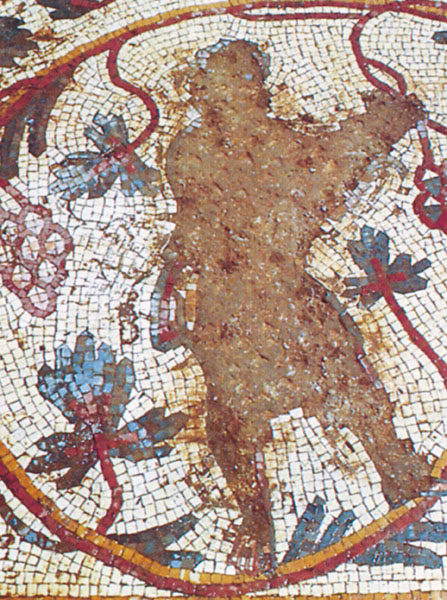Image Details

Michele Piccirillo/Mosaics of Jordan
Sometime in the eighth century A.D., this mosaic image of a vineyard worker was gouged out of a floor pavement in the church of Al-Khadir, in Madaba, Jordan—though the rest of the image was left intact. A similar pattern of destruction occurred in nearly every church in eighth-century Palestine: Depictions of animals and ordinary humans were obliterated, while other images (including holy figures) were untouched. This differs markedly from contemporaneous forms of iconoclasm in the Islamic world, in which images of all living beings were prohibited, and in Byzantine Christianity, in which only sacred images were taboo.
Why the difference? Because, author Robert Schick suggests, local Christian communities, who did not share the iconoclastic beliefs of their brethren to the north, did the damage themselves—to appease their Muslim overlords while preserving their precious mosaics.
